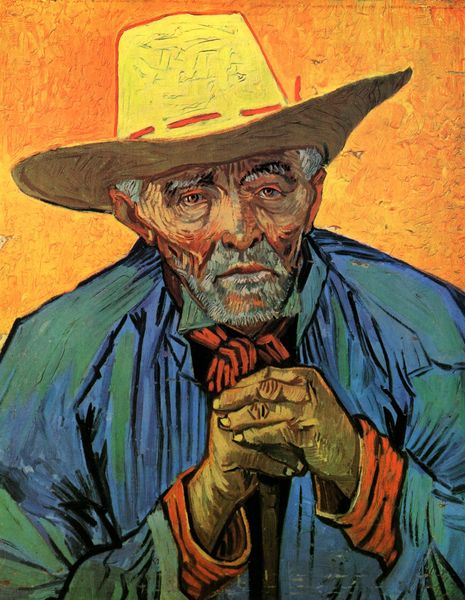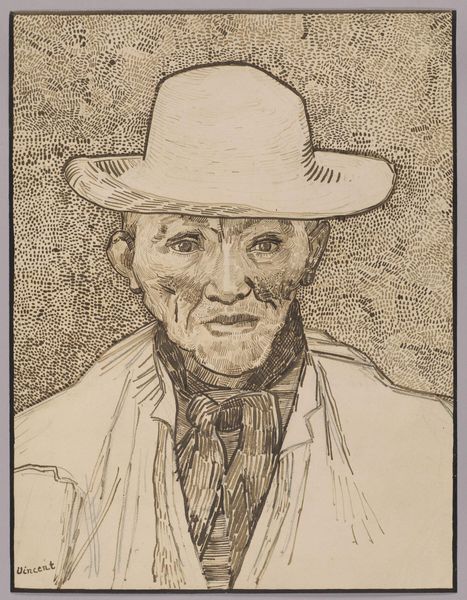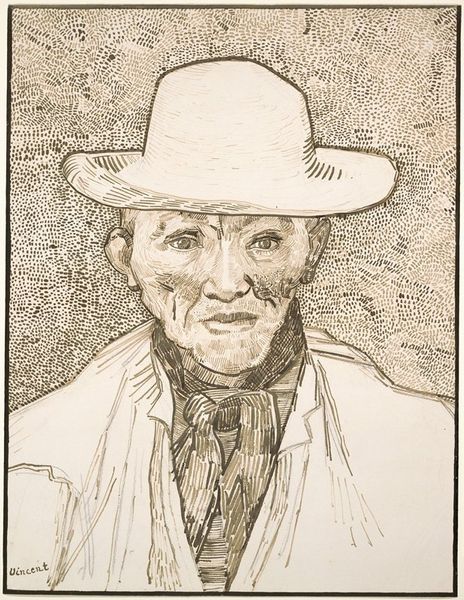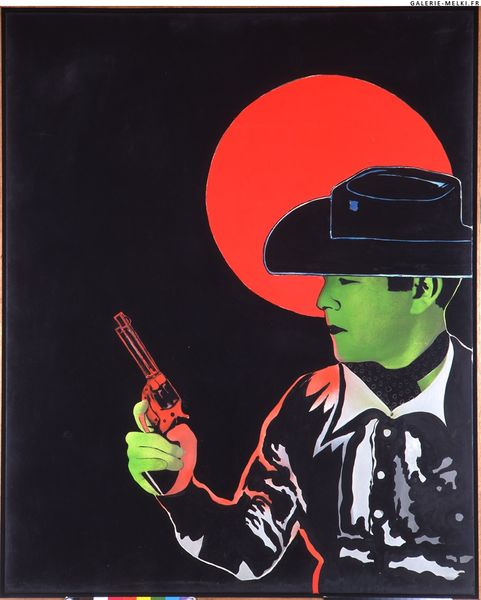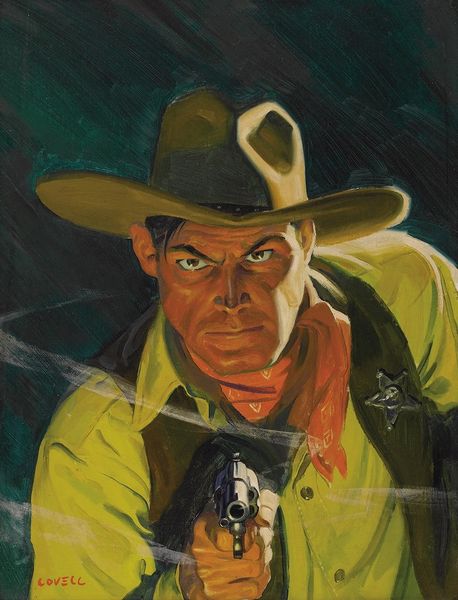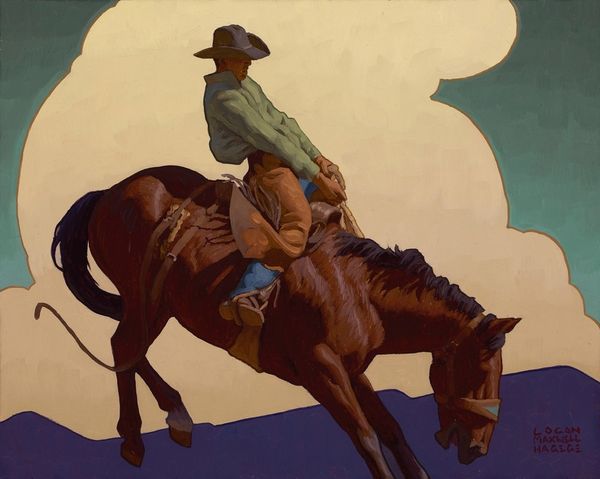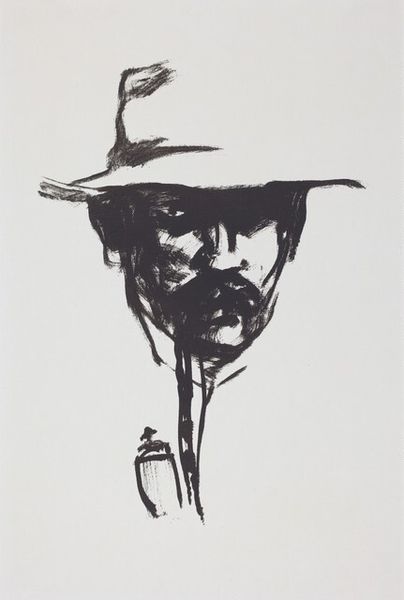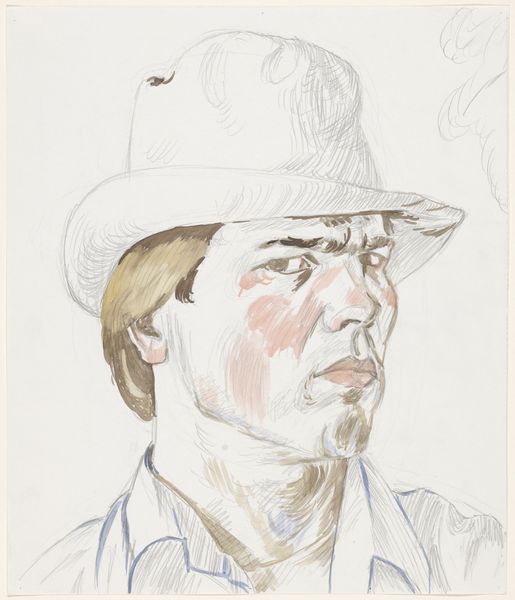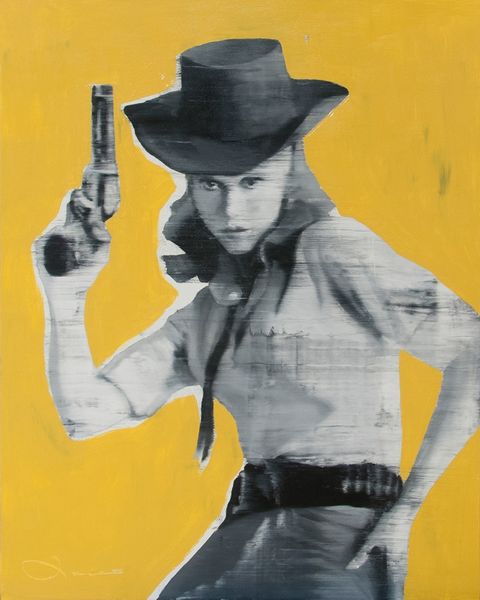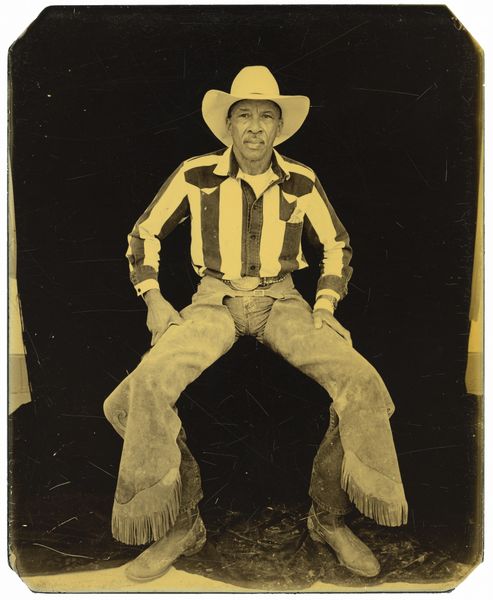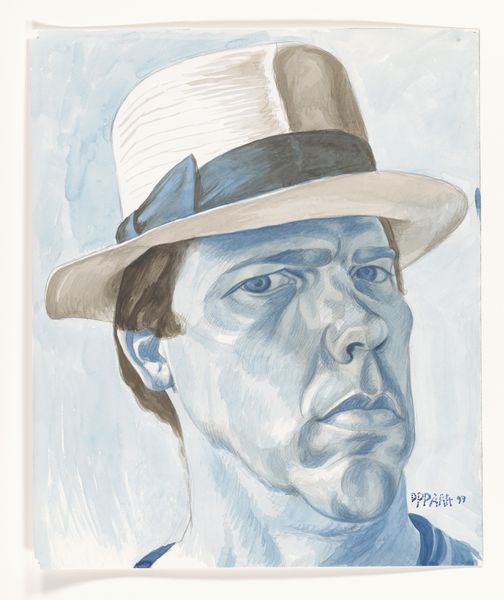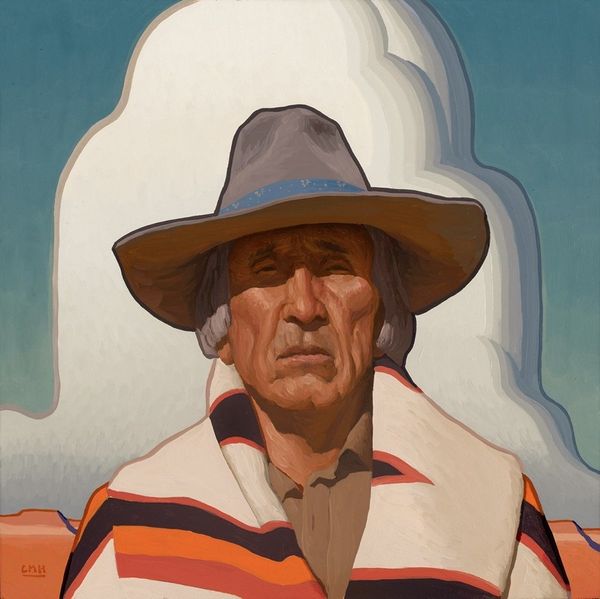
Copyright: Modern Artists: Artvee
Editor: So, this is Andy Warhol's "John Wayne" from 1986. It's a print, and I have to say, seeing this larger than life image of a gun-toting John Wayne in that distinctive Warhol style is... well, it's quite unsettling! What's your take on it? Art Historian: Unsettling is a good word for it. Warhol, ever the astute observer of American culture, is confronting us with a complex figure. On the one hand, John Wayne represents a particularly rugged, masculine ideal – one deeply embedded in the mythology of the American West. But look closer: Warhol's vibrant, almost cartoonish colors undermine that seriousness. He's using the Pop Art language to both celebrate and perhaps critique this iconic figure. How do you think audiences would have reacted to this in 1986, near the end of Wayne's life, after his controversial political statements? Editor: I can imagine it would be a bit divisive, especially with Warhol's history of focusing on fame and celebrity culture. I wonder, is he trying to say something about the commodification of masculinity? Art Historian: That’s definitely part of it. But also consider the politics of imagery itself. Wayne became a symbol for a certain type of conservative ideology, particularly through his roles in Westerns and war movies. By rendering him in this brightly colored, almost artificial way, Warhol forces us to confront that symbolic weight. The art becomes a battlefield of meaning. Did Wayne, himself, commission or authorize this print? Editor: Oh, that's a good point; it makes you wonder about the dynamic. I now see the caricature a bit differently. Thanks, I've definitely got a new perspective! Art Historian: Likewise. It’s always fascinating to revisit these loaded images and consider their lasting impact on our cultural narratives.
Comments
No comments
Be the first to comment and join the conversation on the ultimate creative platform.
